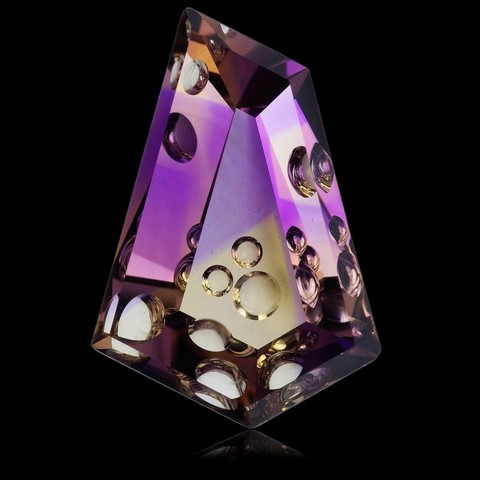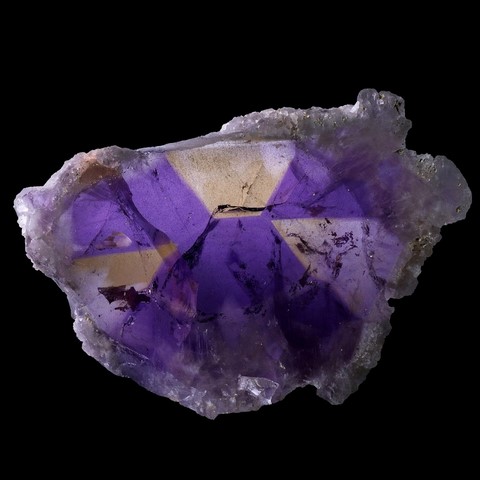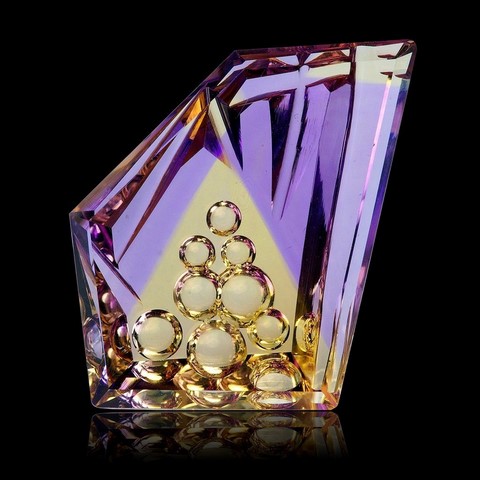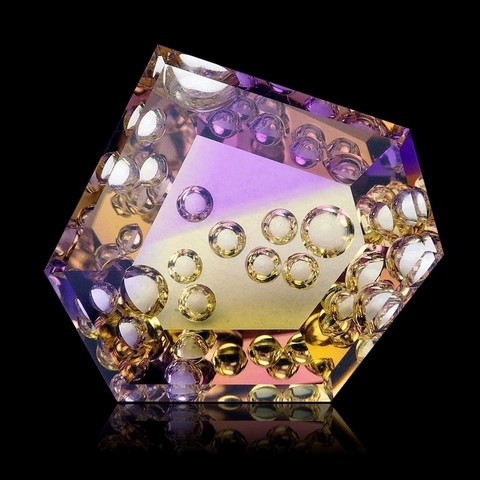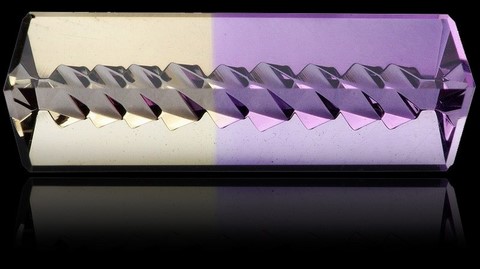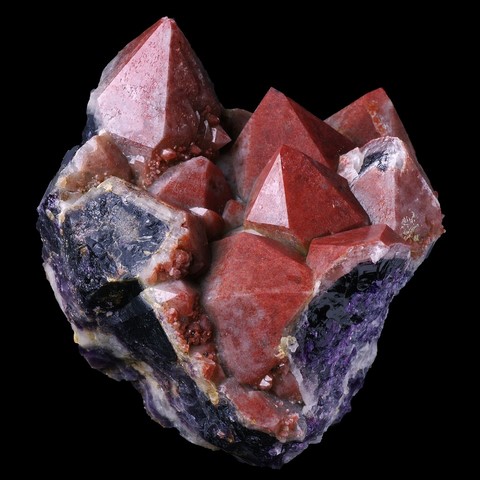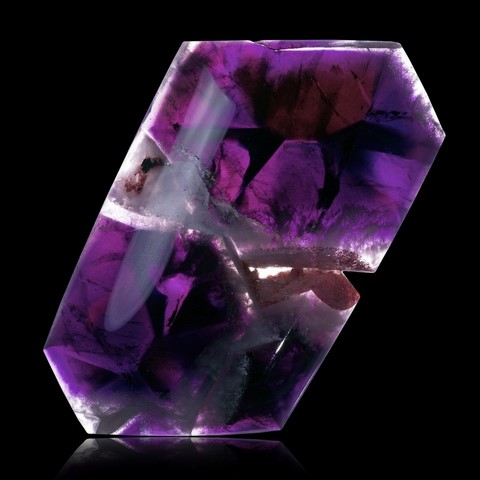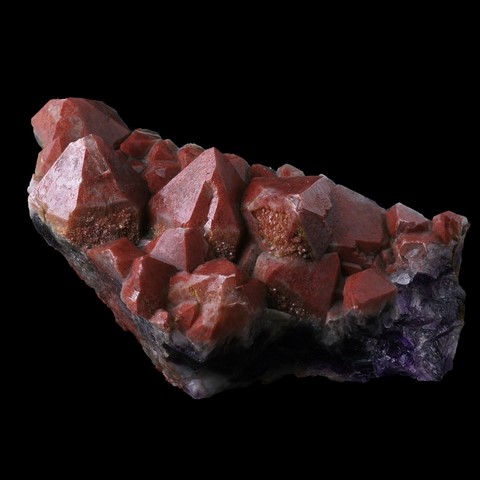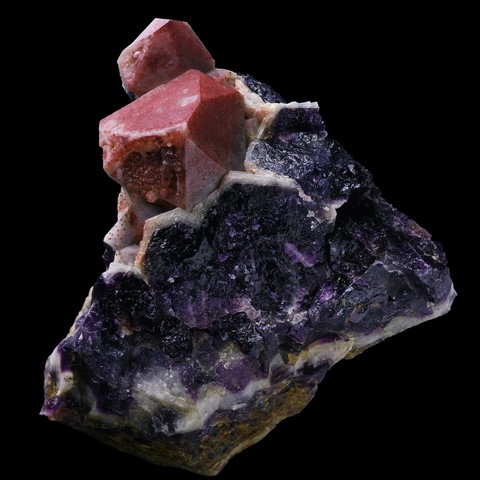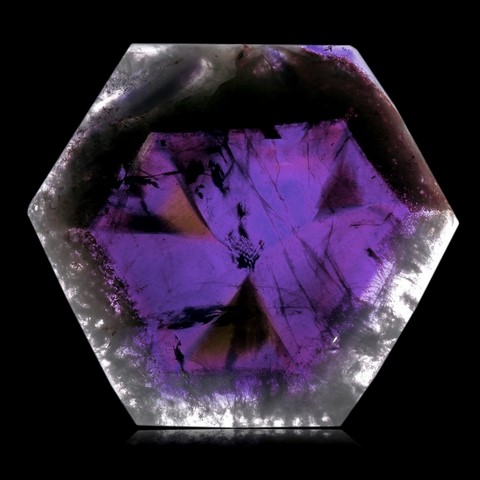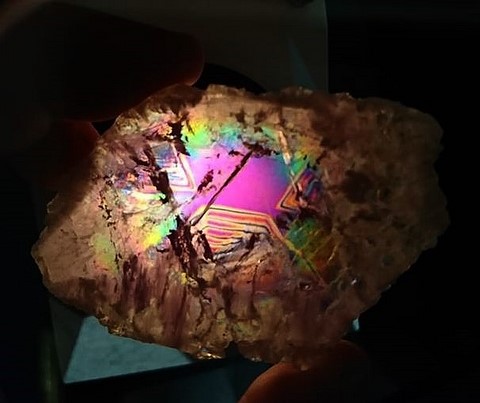 Ametrine - Encyclopedia
Ametrine - Encyclopedia
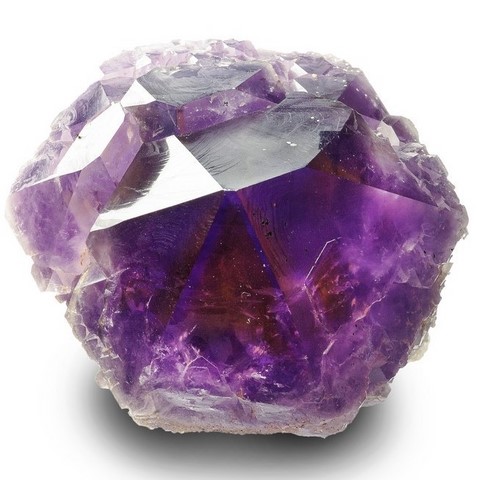
Class : Silicate
Subclass : Tectosilicate
Crystal system : Trigonal
Chemistry : SiO2
Rarity : Rare
Ametrine is a violet and yellow variety of quartz. The crystals consist of alternating purple and yellow-orange zones. Usually it is cut in slices perpendicular to the axis of elongation of the crystal, which allows to reveal the yellow and violet triangular zonations and thus to cut bicolored gemstones. Ametrine owes its name to the contraction of amethyst and citrine, the purple areas are indeed made up of amethyst and the yellow-orange areas of citrine. These color differences are linked to different sectoral iron oxidation states. Crystals with sharp and developed faces and pyramidal terminations are very rare, usually found in corroded columnar crystals. It is a variety of hydrothermal origin that is occur in veins. This variety of quartz is of great interest for the jewelery industry, the vast majority of stones are cut, in well-shaped crystal it is also sought after mineral collectors.
Ametrine in the World
Officially this variety of quartz is found only in one place in the World and it is in Bolivia where it is exploited with amethyst in hydrothermal veins that cross dolomitic limestones. Ametrine crystals can typically measure more than 20 cm. It is mainly mined, although some quarries are open outside.
Ametrine in France
The only known deposit in the World being Bolivian one might think that there are no real ametrine in the French underground. However, we were surprised to discover crystals with the same zonation as the Bolivian crystals at Chaméane in Puy-de-Dôme by cutting some gemstones. The discovery dates back to 2017 when a pocket of very dark amethyst crystals covered with a red hematoid hood was discovered. By cutting slices perpendicular to the axis of elongation of the crystals and backlit the slices we observe the same zonation as on the Bolivian specimens (left photo), the resemblance is striking, with the difference that the Chaméane crystals are so dark that they appear black without backlighting.
Twinning
Ametrine crystals are almost all Brazil-law twinned, like for quartz. This twinning is only detectable with polarizing filters.
Synthetics

Ametrine is a highly synthetized gemstone, because of its haunting appearance and of its importance in jewelry. It has been produced since the 90's in laboratory. Crystals grow for periods sometimes greater than 1 year in a mixture of water and nutrients in the environment where the pressure, the temperature and the oxygen fugacity are controlled. These "pressure cookers" are called autoclaves. In order to grow a synthetic crystal a seed is needed (a small piece of natural and untwinned quartz). The result is a flattened crystal of ametrine (photo right - copyright Maha Tannous - GIA).
In order to differentiate fake from synthetic at home, there are 2 methods that exist, the first is to seek the Brazil-law twinning plans. To do that, it will take 2 polarizing filters, we place the first filter in front of a light source, we take the suspicious ametrine in one hand and the second polarizing filter in the other, we rotate the polarizing filter in his hand while looking at until the light source on which you have placed the first filter appears black, then it is said that the polarizing filters are in the crossed position (or that the light is polarized-analyzed). Ametrine is then placed between the 2 polarizing filters, parallel lines of flashy colors then appear, they are Brazil-law polysynthetic twinning (left picture). If they are present, ametrine is necessarily natural.
The second method is to look at the growth lines in the stone and more particularly in the purple parts where they are clearly visible, this may require the use of a microscope or magnification. In a natural ametrine the growth lines are at an angle of 38° or 67° with the yellow-purple border marked "m" (see photo below - copyright K. Schmetzer / Gem's A website). In synthetic ametines this angle is only 0° to 8°, which is easily understood by observing the morphology of the synthetic crystal described above.
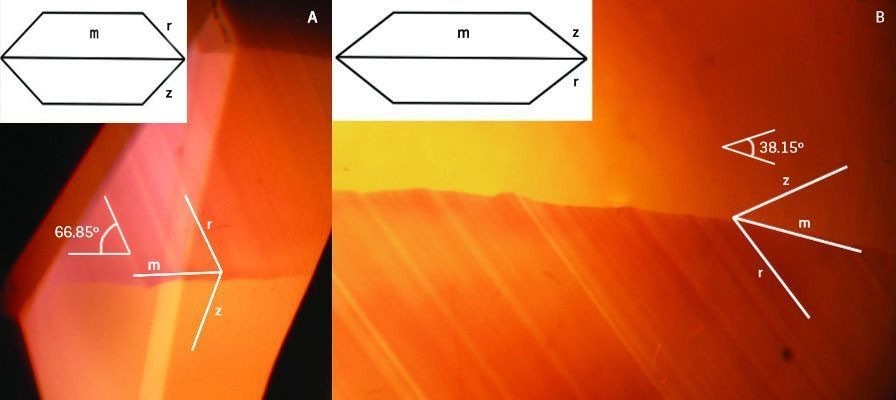
Hardness : 7
Density : 2,65
Fracture : Conchoidale
Trace : White
TP : Transparent to opaque
RI : 1,544 to 1,553
Birefringence : 0,009
Optical character : Uniaxial +
Pleochroism : Weak
Fluorescence : Très rare
Solubility : Hydrofluoric acid
Magnetism : None
Radioactivity : None

